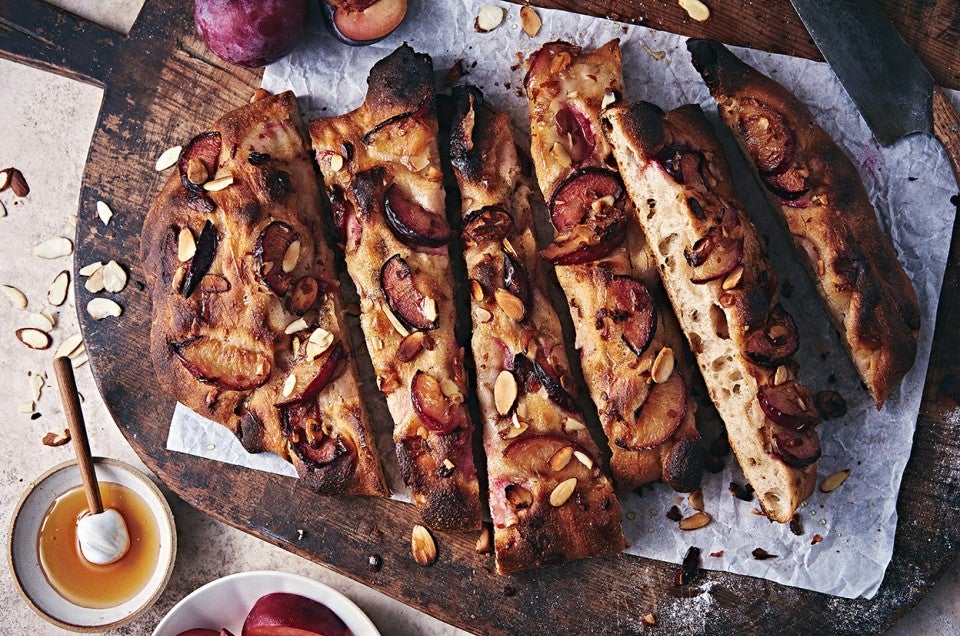


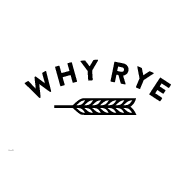 As we celebrate rye flour and all the baking possibilities it offers, we're thrilled to welcome award-winning bread baker and cookbook author Bryan Ford to help us explore just why you should be baking with rye. Below, he shares his passion for rye and a sweet focaccia recipe to put it to use.
As we celebrate rye flour and all the baking possibilities it offers, we're thrilled to welcome award-winning bread baker and cookbook author Bryan Ford to help us explore just why you should be baking with rye. Below, he shares his passion for rye and a sweet focaccia recipe to put it to use.
When I first started baking sourdough bread and creating recipes for my blog, I used King Arthur flour for all of my baking. It’s such a pleasure to work with easily accessible flour that’s crafted with care and commitment. Now after publishing my first book, New World Sourdough, and having readers around the world make so many of my recipes, I’m honored to be able to work together closely with King Arthur Baking Company to share my love for their new Organic Medium Rye Flour and offer a recipe to bake with it.
But first, let’s talk a little bit about baking with rye. Depending on how you’re using it in your kitchen, you'll want to select specific types of rye flour to work with. I tend to use it two different ways: in sourdough starter, and to make baked goods.
When it comes to your starter, you’ll want to use whole grain rye flour, sometimes known as pumpernickel flour. Whole grain rye is great for making a sourdough starter because it contains all of the nutrient-dense bran and germ of the rye berry. Whole wheat flour works just as well, but I prefer the flavor profile that’s derived from rye flour. Rye is the perfect flour to kickstart the harvesting of bacteria in your starter and expedite your sourdough journey.
Now that we understand how to use rye flour to create a sourdough starter, let’s talk about how to bake with it. Instead of whole grain rye, which can lead to heavy, dense final goods, medium rye flour provides a lighter texture while still adding a ton of rye flavor to various baked treats.
King Arthur Organic Medium Rye Flour is 100% grown and milled in the United States. It’s a slightly darker rye that's milled closer to the bran than white rye, and contains a little bran without being a whole grain rye. This rye flour is perfect for substituting for all-purpose flour; you can also use it to make classic, flavorful rye bread or to bring robust rye flavor to other recipes like cakes, scones, cookies, and DESSERT FOCACCIA!
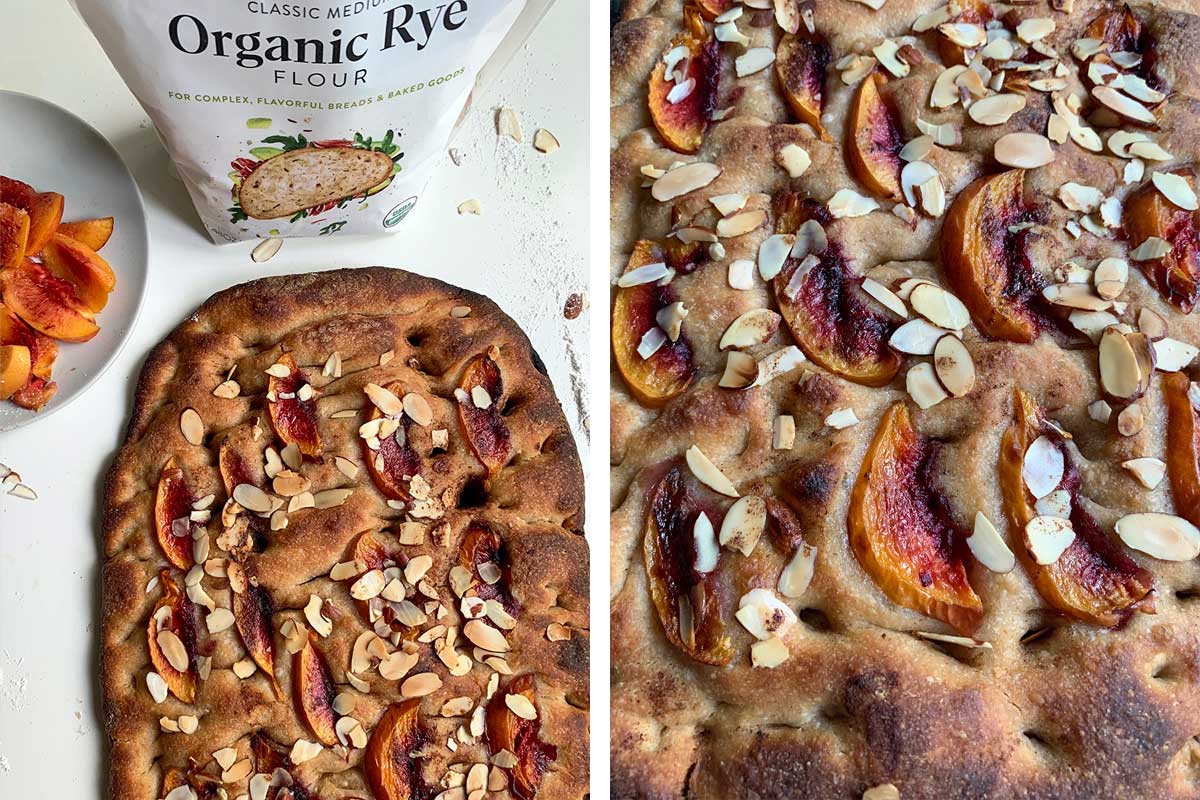
If you want to use this flour to add moistness and flavor to cookies, muffins, and other baked goods, you can substitute rye flour for up to 25% of the all-purpose flour called for in your recipe. To put it to use, you can try my recipe for Sourdough Rye Dessert Focaccia, as well as other recipes that are found on King Arthur’s recipe site.
So, you might be wondering: why would you make a focaccia with rye flour? Well, the malty, nutty flavors that are derived from this medium rye flour are perfect for a sweet dessert creation. This recipe uses 40% rye flour, which might seem like a lot, but balancing the rye with King Arthur Unbleached Bread Flour creates a perfectly fluffy, slightly dense but still soft interior to the focaccia.
I use peaches in the recipe below, but since the holiday season is coming up, feel free to use whatever seasonal fruits are available to you, like figs, pears, apples, or cranberries. Whichever fruit you choose, you won’t regret creating this sweet focaccia for your family table.
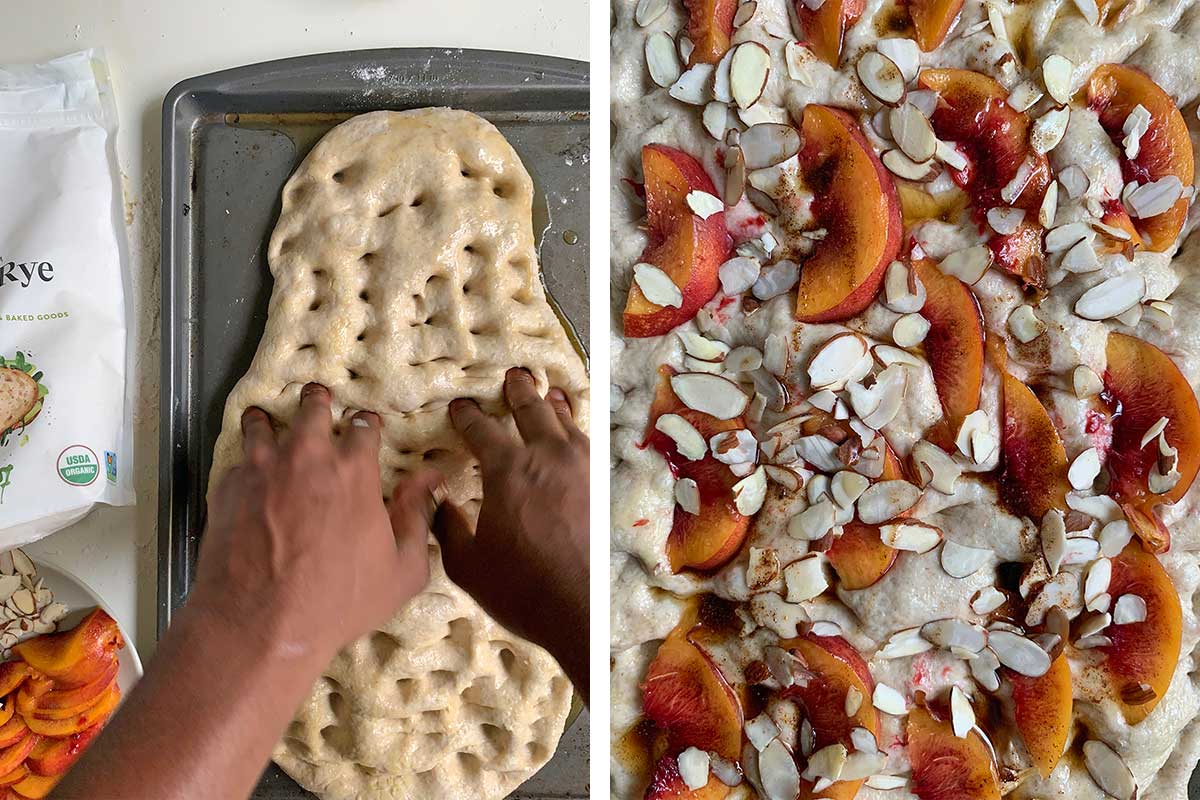
Note: This recipe was developed using metric measurements, but if you want an approximation using American volume measurements, see the recipe page.
For the levain:
For the dough:
For the topping:
This levain is ready pretty quickly, as we are adding 50% starter to the amount of flour. I like to make these strong, high-inoculation levain builds because they give me a more reasonable baking timeframe when I want to start my mixes.
To build the levain, mix the starter, flours, and water until incorporated. Cover and leave the levain in a warm place for 3 to 4 hours, or until doubled in size. You can use your levain immediately or refrigerate it up to 12 hours (or overnight) to use the next day.
To make the dough, transfer the levain to a large mixing bowl and add 280g (80%) of the water. Stir the water and levain together to dissolve the levain a bit; it’s OK if it’s not fully homogenous.
Add the flours, sugar, and olive oil to the water mixture and mix until there's no dry flour left. Let this mixture rest for 1 hour, covered, in a warm place.
After this hour has elapsed, add the salt and the remaining 70g water. Squeeze the dough together with your hands until the water and salt are absorbed into the dough. Try not to tear the dough. This process should take 3 to 5 minutes.
Take the dough out of the bowl and perform a slap and fold, or some stretching and folding to the dough to build a nice strong structure; a bench knife is a handy tool here to lift the sticky dough from the work surface and ensure you’re working with all the dough as you go.
Baker’s tip: For a guide on how to stretch and fold, read Bulk fermentation, explained: building strength, volume, and flavor.
Once your dough is almost smooth — it’ll still be very sticky — stretch and/or knead it until it has a smooth surface. Return the dough to the bowl, cover, and let it rest for 30 minutes.
After 30 minutes have elapsed, perform a stretch and fold of your dough to continue building strength. Repeat this process one more time for a total of two stretch and folds in a 1-hour period.
After you’ve stretched and folded the dough a second time, allow it to rise for 4 to 6 hours. It should be nice and bubbly to the touch; if it’s in a clear vessel, you’ll see a web-like structure near the bottom.
Flour your work surface and place your dough on it. Shape the dough into a long cylinder by folding it from the top and into the center of itself. Do this a few times until you have a loosely shaped cylinder.


Place the dough on a baking sheet coated with olive oil then coat the dough with olive oil. Cover the pan and dough, and refrigerate for 12 hours.
An hour before you’re ready to bake, preheat the oven to 450°F to 500°F. Meanwhile prepare the toppings. First, make your brown butter by sautéing the butter in a saucepan on medium heat until it starts to turn golden brown. Remove the pan from heat and let the butter cool for 15 minutes.
With your hands, gently coat the dough with almost all the brown butter (reserving some to use just before baking). Now with your fingers, dock (or dimple) the dough until you have an even pattern of peaks and valleys. You’ll want to be relatively gentle again so as not to poke holes through the bottom.
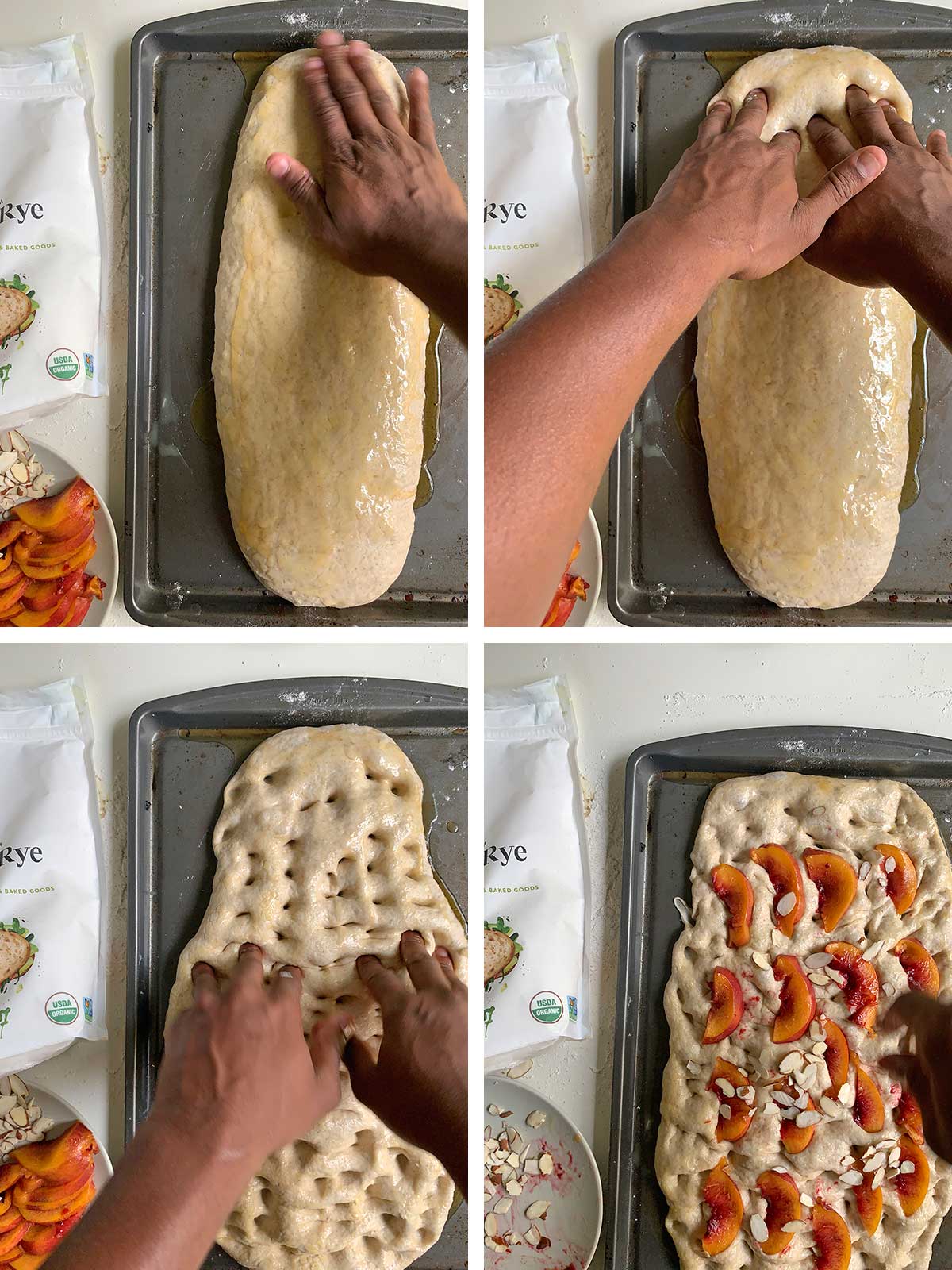
Next, slice your fruit thinly (roughly into 16ths, but don’t worry about the exact number) and arrange the slices on the focaccia, aiming for at least one slice per serving. Top with the sliced almonds, sprinkling them evenly over the dough and fruit. Finish with some drizzles of honey and the remaining splashes of brown butter.
Bake the focaccia for 20 to 25 minutes, or until it's slightly darker than golden brown. This focaccia is at its best when it’s nice and crispy on the outside and chewy on the inside. Remove the focaccia from the oven, and transfer to a rack to cool slightly before serving.
Store leftover focaccia at room temperature for a day or so or freeze for longer storage.
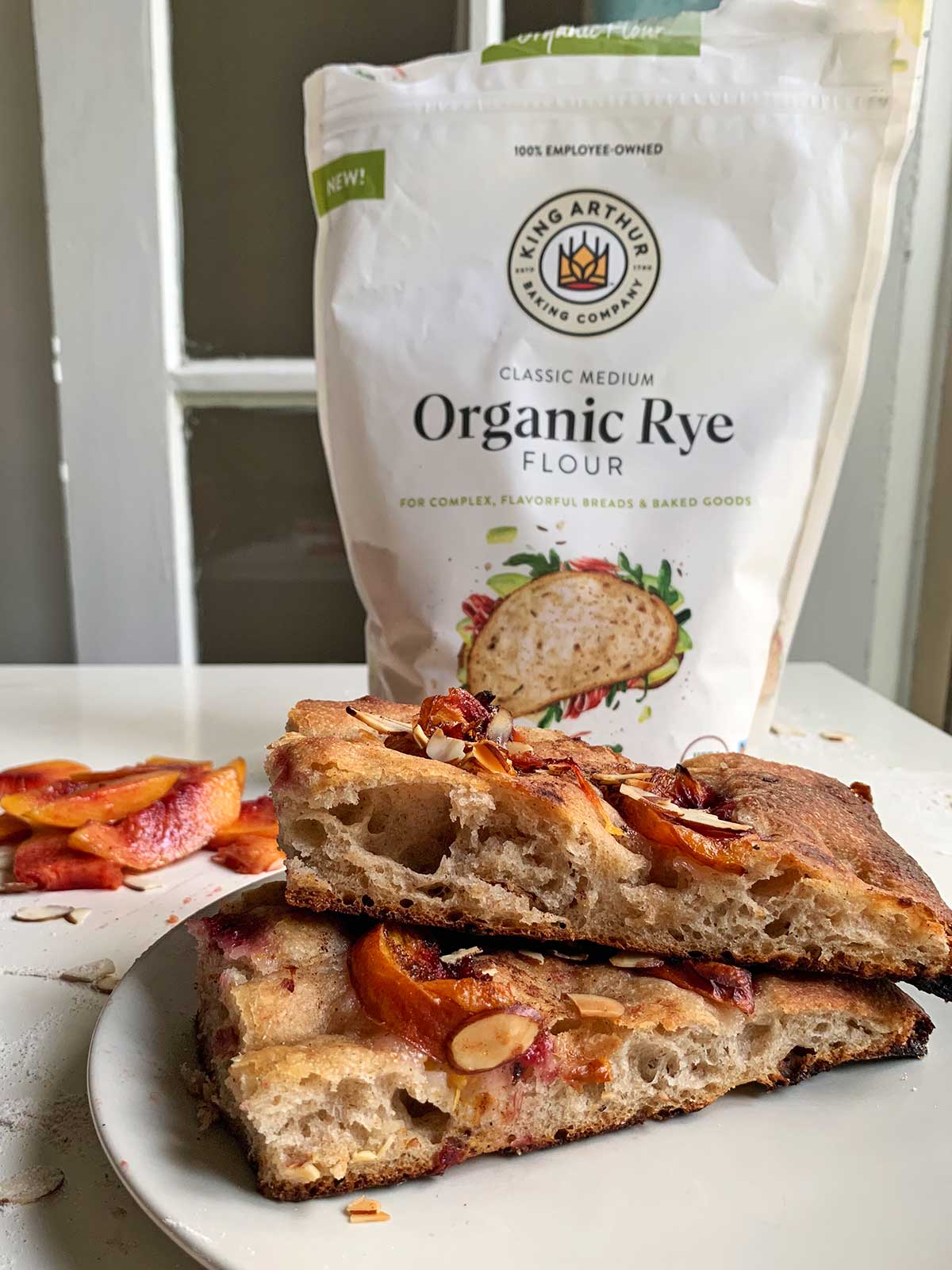
For more blog posts on the ins-and-outs of baking with rye, follow along here. And for more recipes like this from Bryan, visit his blog Artisan Bryan.